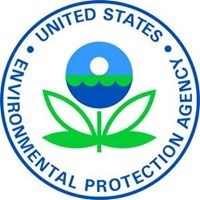Florida to Receive $419,000 from EPA for Beach Water Quality Monitoring
ATLANTA — (RealEstateRama) — As the nation heads into the summer beach season, the U.S. Environmental Protection Agency (EPA) has begun awarding up to $9.24 million across 39 states, territories and tribes to develop and implement beach monitoring and notification programs. Upon meeting the eligibility requirements, Florida will receive $419,000.

“Ensuring Americans have clean water for drinking and recreation is a national priority for the Trump Administration, and EPA is doing its part to make sure our coastal and Great Lakes waters are clean and healthy for beachgoers this summer,” said EPA Administrator Andrew Wheeler. “These grants will increase public information about water quality at our beaches and help our state and local partners conduct testing and address potential sources of contamination.”
“Beach grants enable our partners in Florida to have the tools and resources they need to ensure that communities can keep their beaches safe and enjoyable for all,” said EPA Acting Region 4 Administrator Mary S. Walker.
Under the Beaches Environmental Assessment and Coastal Health (BEACH) Act, EPA awards grants to eligible state, territorial and tribal applicants to help them and their local government partners monitor water quality at coastal and Great Lakes beaches. When bacteria levels are too high for safe swimming, these agencies notify the public by posting beach warnings or closing the beach. Since 2002, state and local governments, territories and tribes have used nearly $167 million in EPA BEACH Act grants to monitor beaches for fecal indicator bacteria, maintain and operate public notification systems, identify local pollution sources, and report results of monitoring and notification activities to EPA.
As part of EPA’s efforts to better protect Americans who plan to swim and play in or near the water the summer, the agency recently issued recommendations for water quality criteria and swimming advisory values for two cyanotoxins. Algal blooms caused by cyanobacteria sometimes produce cyanotoxins that can be harmful to people recreating in or on the water when present above certain concentrations. EPA’s recommendations are available for states to consider if they develop water quality standards or local swimming advisories for cyanotoxins. EPA also released infographics that states and communities can use to communicate basic information about harmful algal blooms (HABs) to the public. States, tribes and waterbody managers can download handout- and poster-sized infographic files, along with instructions on how to add local contact information, from EPA’s newly refreshed Cyanobacterial HABs website
For specific information on grants under the BEACH Act, grant guidance, and contact information for state and local beach programs, visit www.epa.gov/beach-tech/beach-grants.
To check on the latest closings and advisories at particular beaches, the public should contact the relevant state, tribal or territorial beach program listed at www.epa.gov/beaches/state-territorial-tribal-and-epa-beach-program-contacts.
Contact Information:
Dawn Harris-Young ()
(404) 562-8421 (Direct), (404) 562-8400 (Main)














